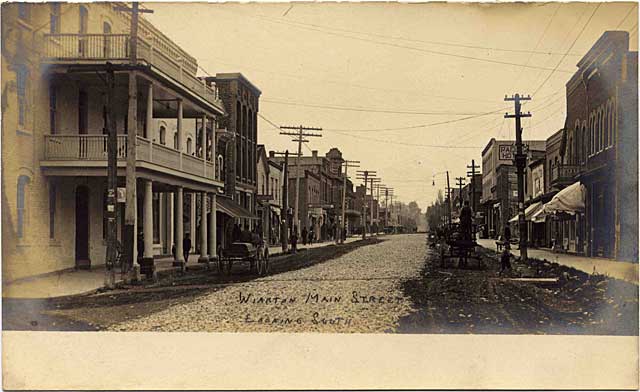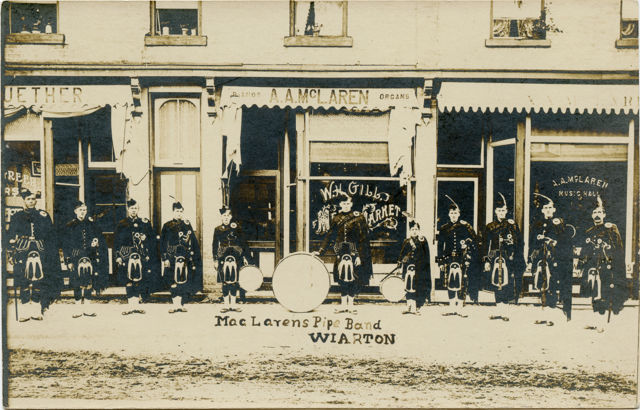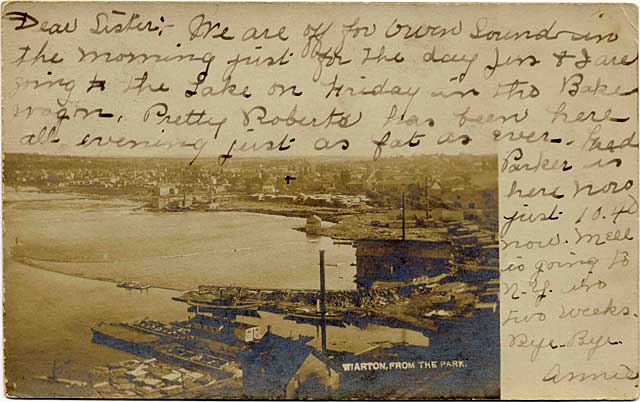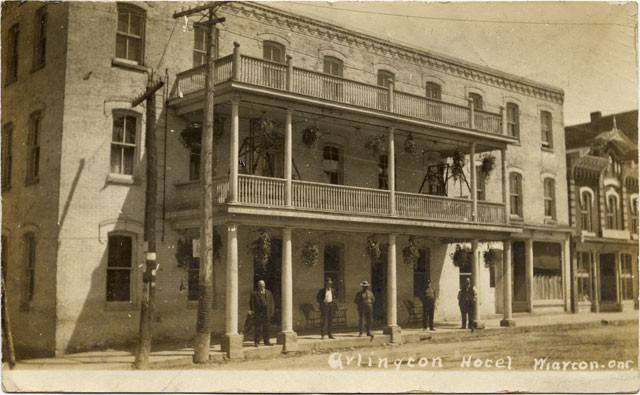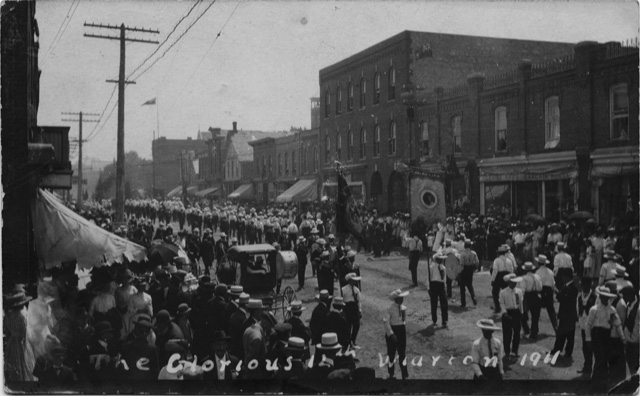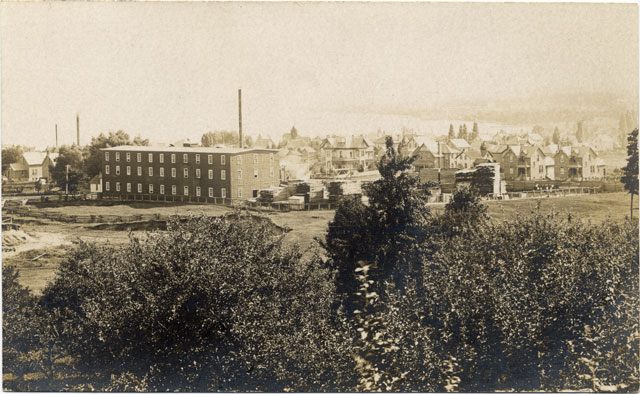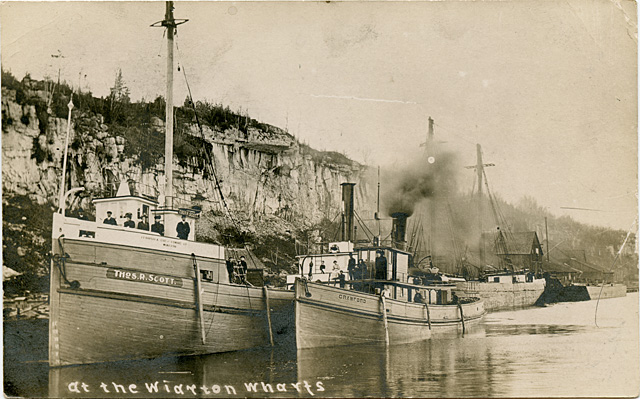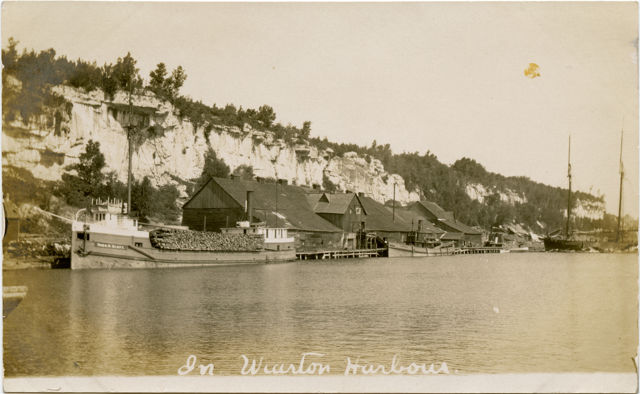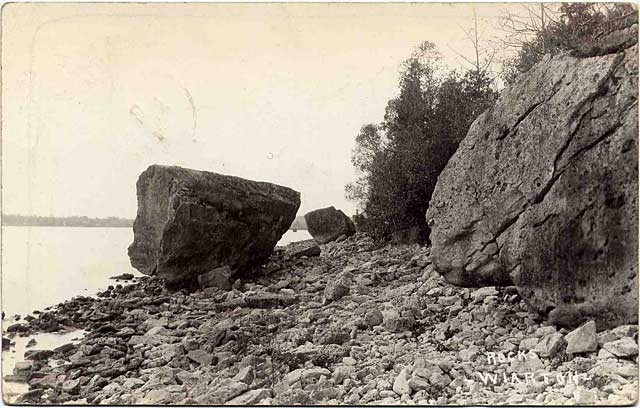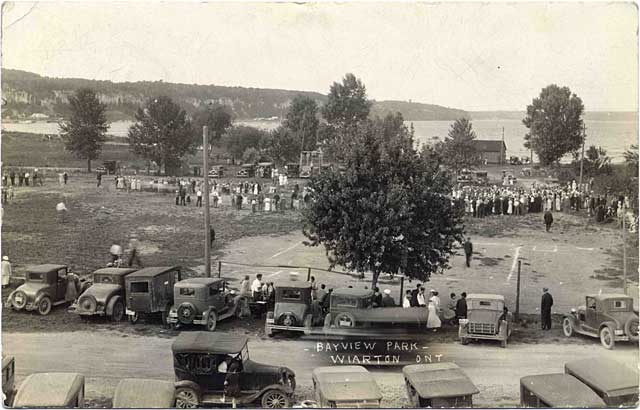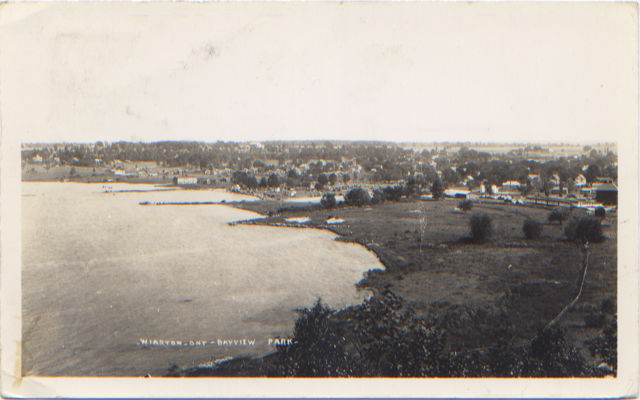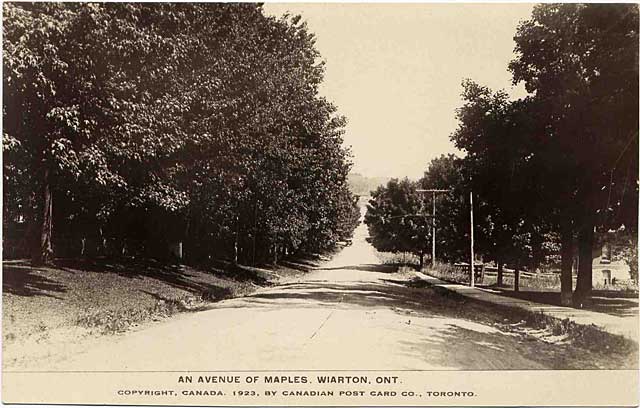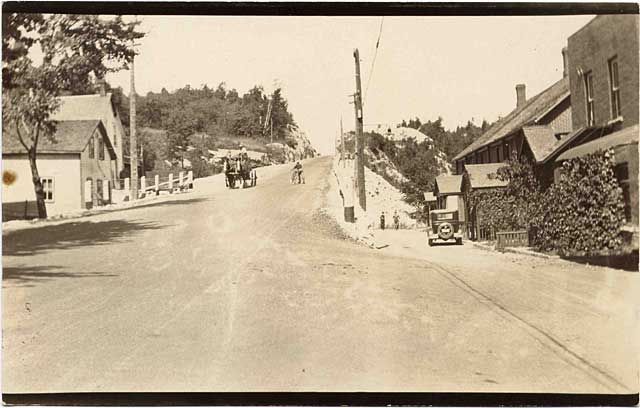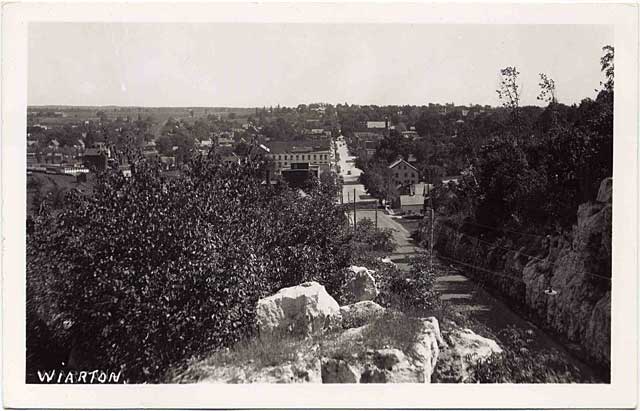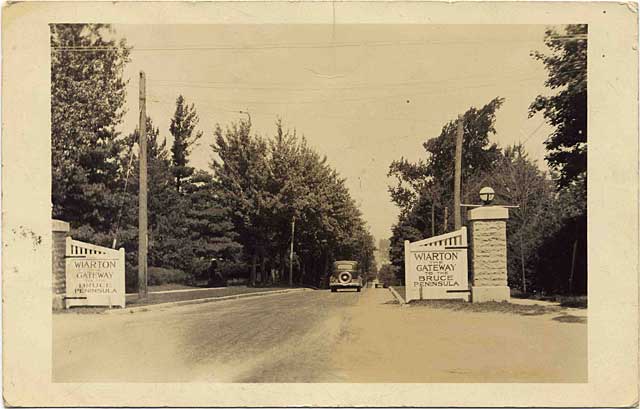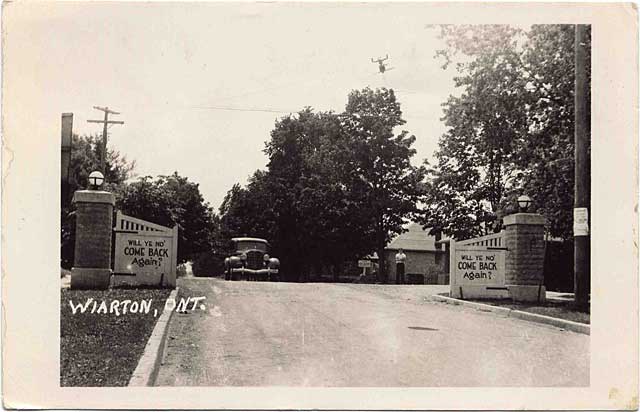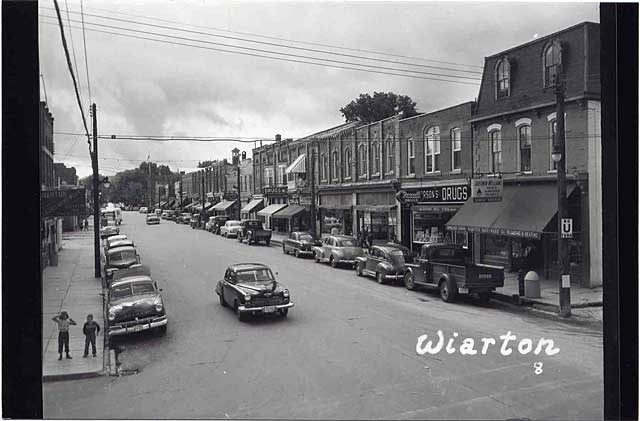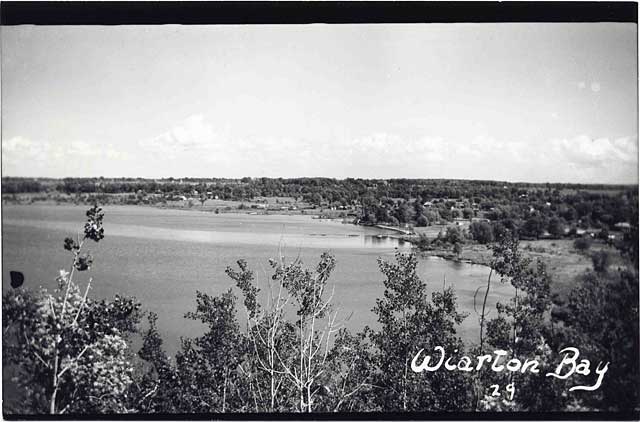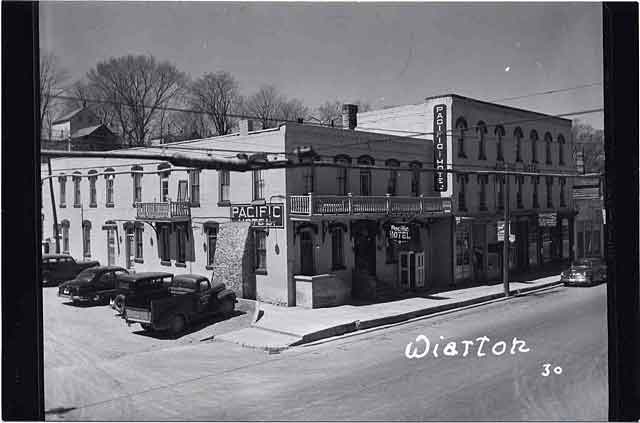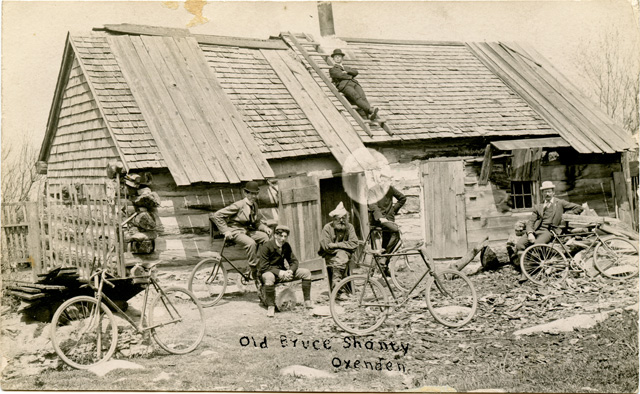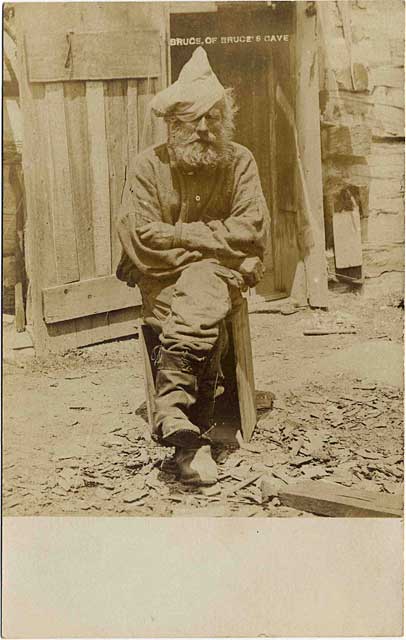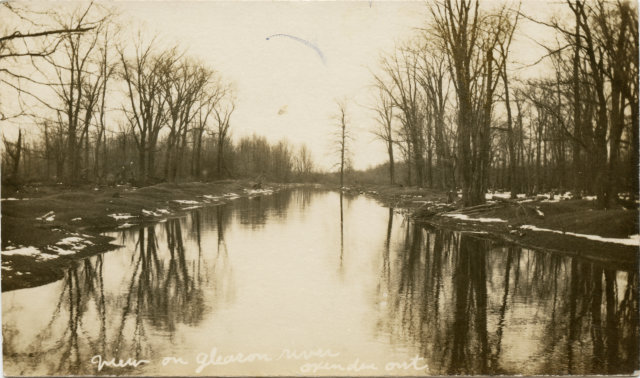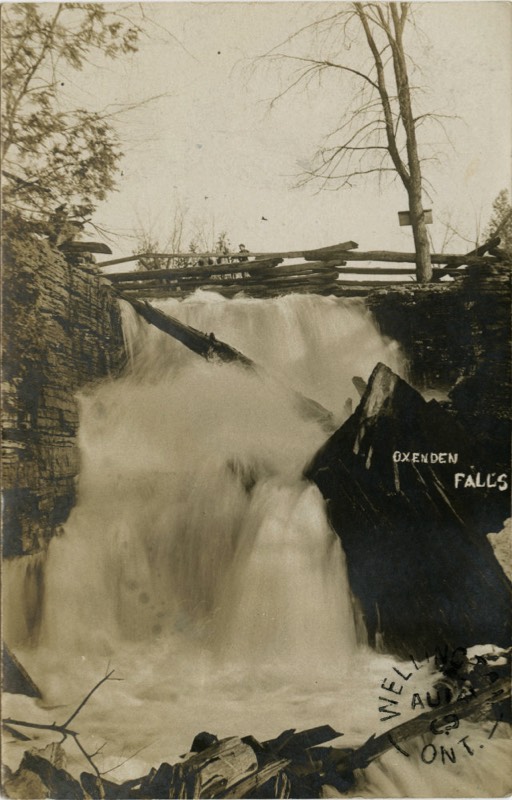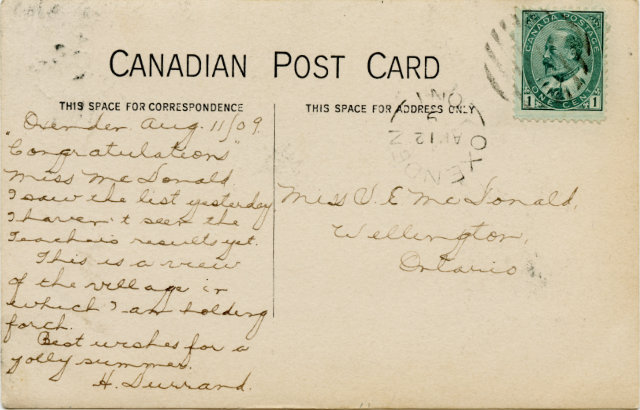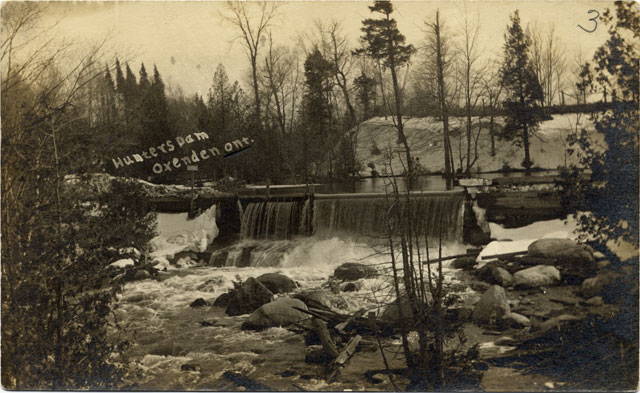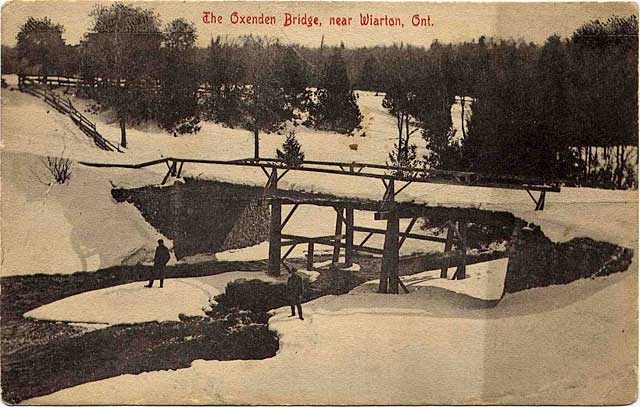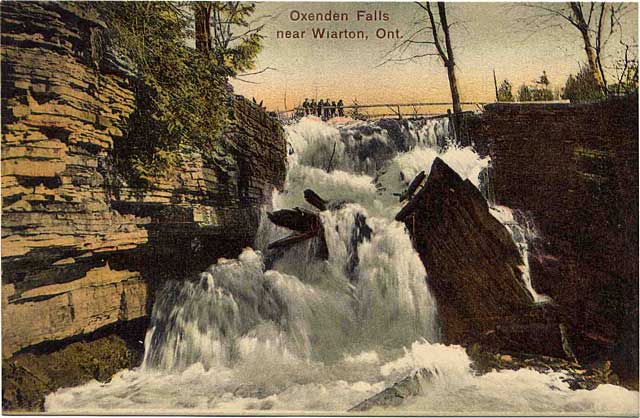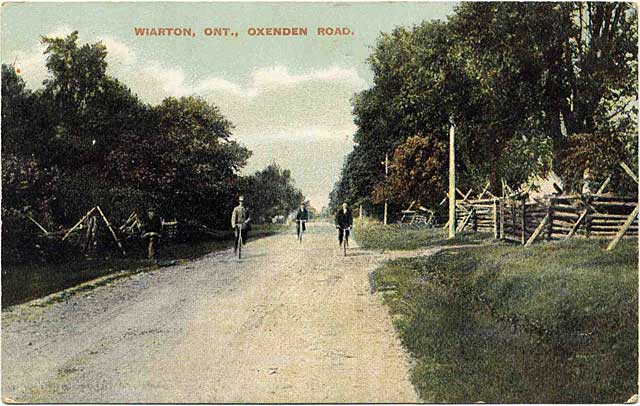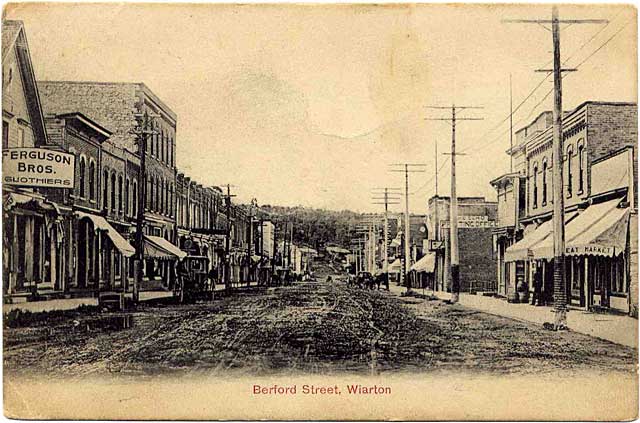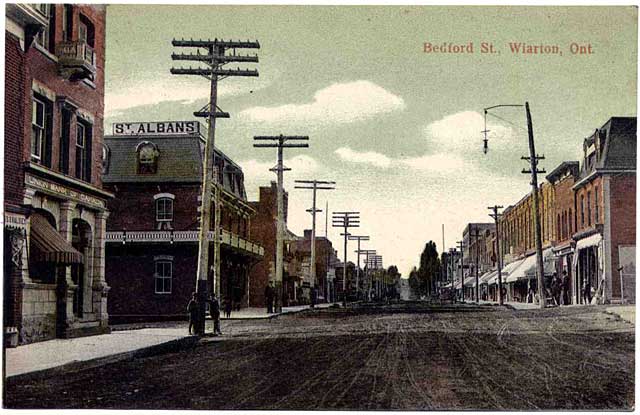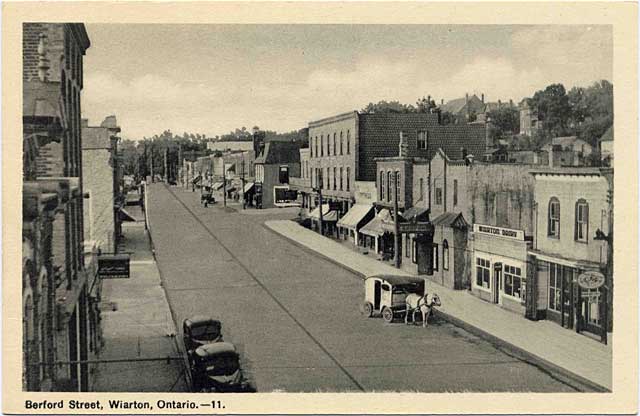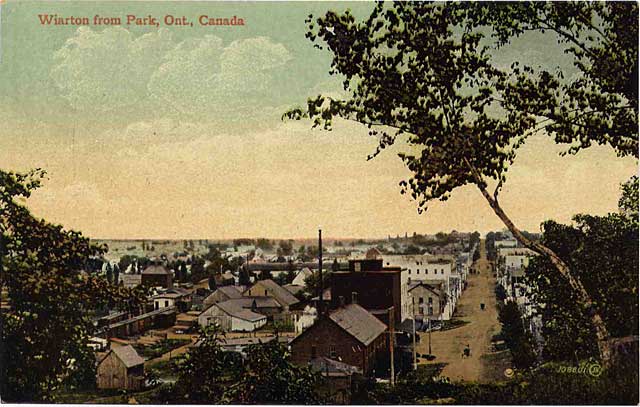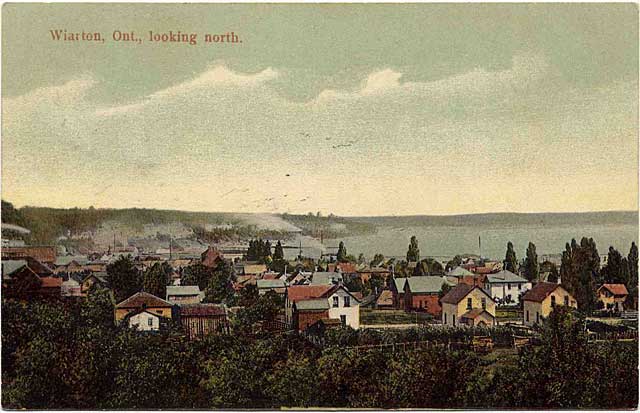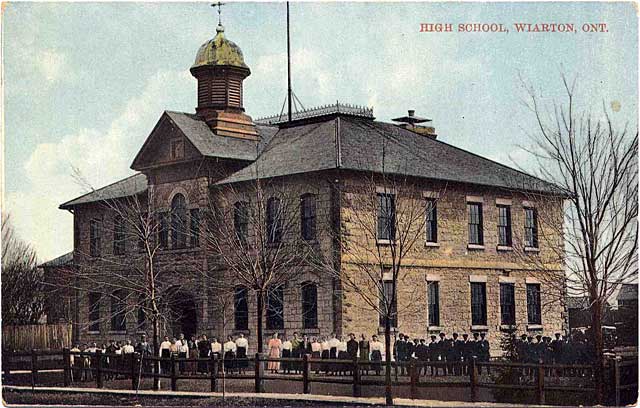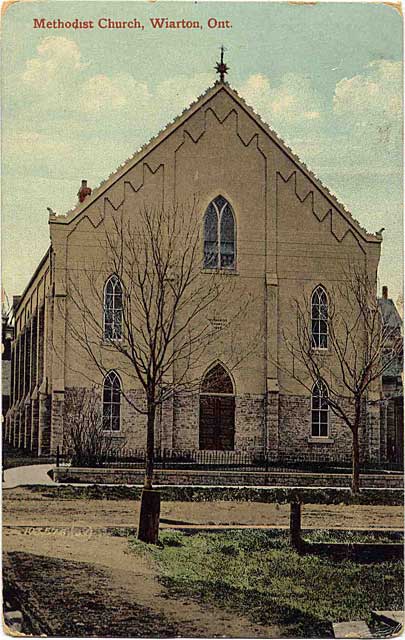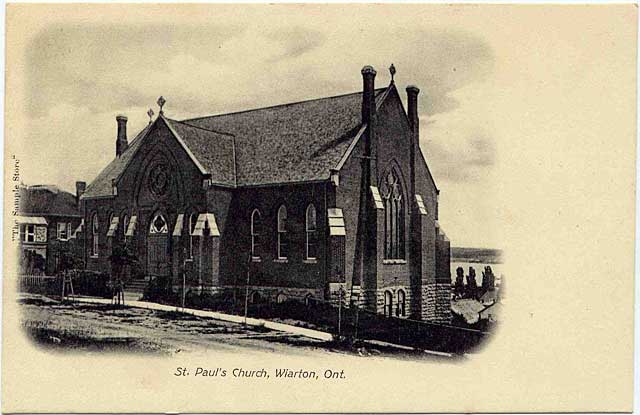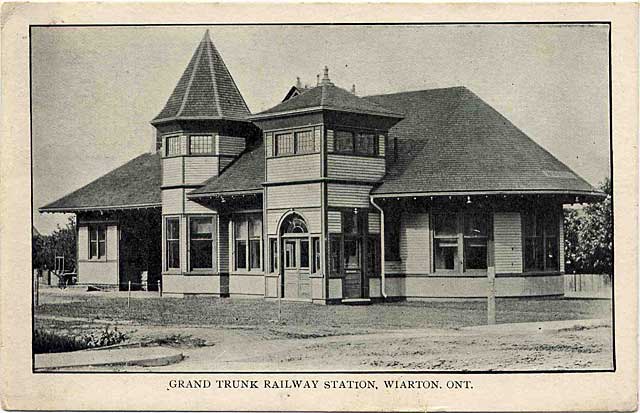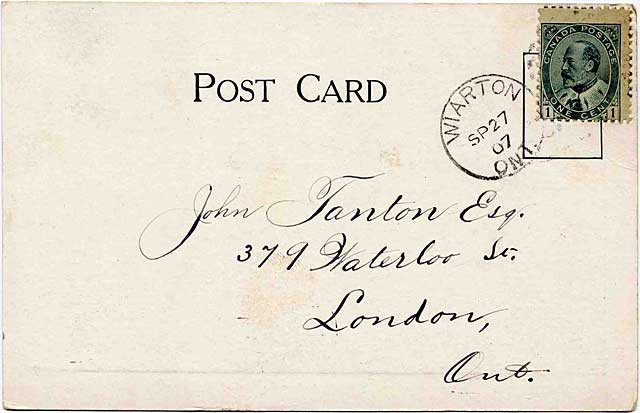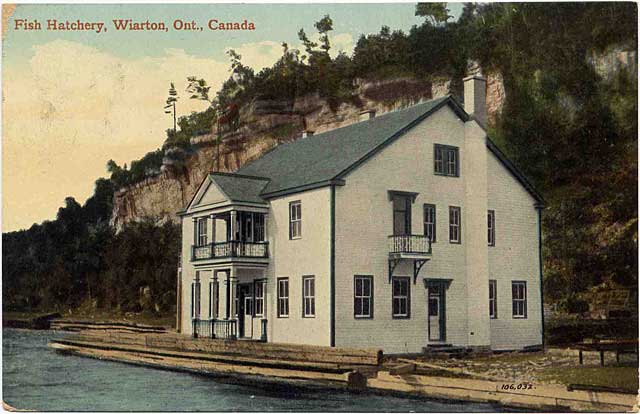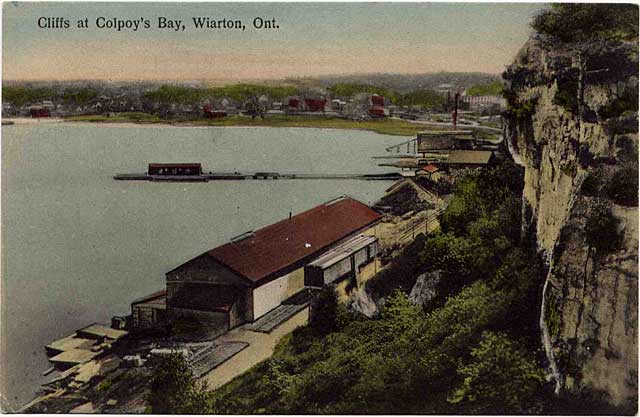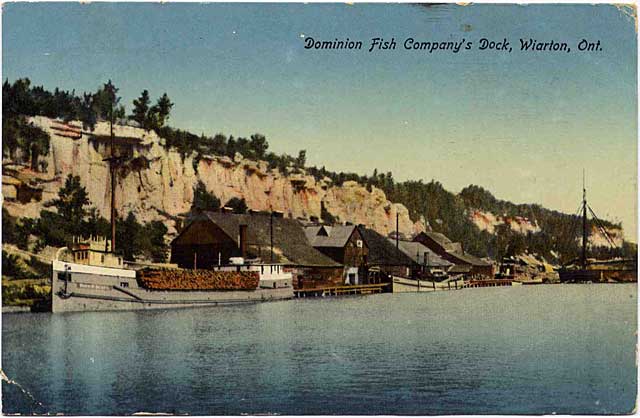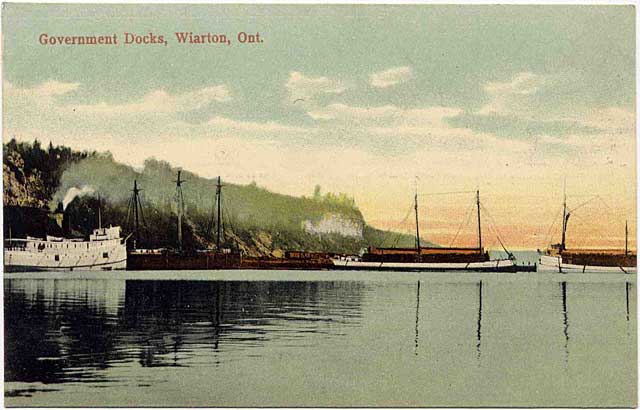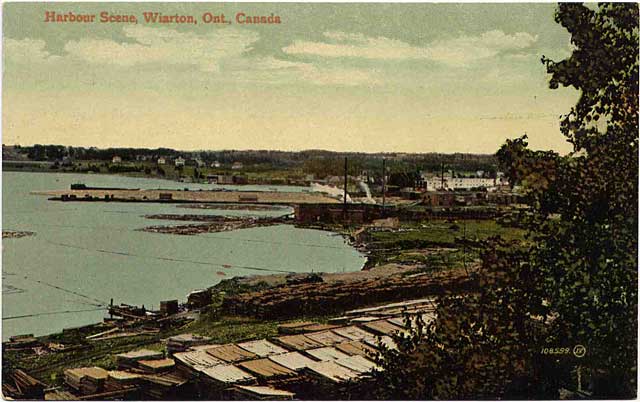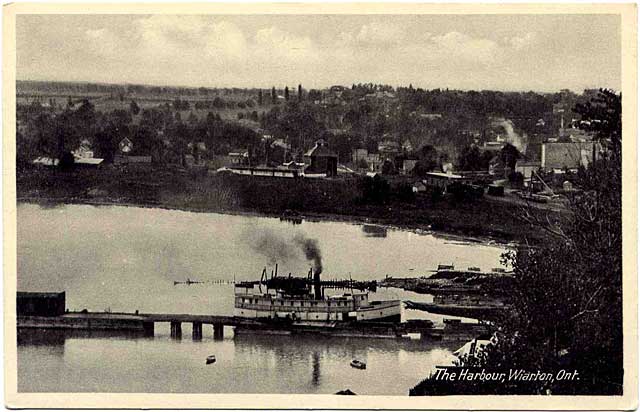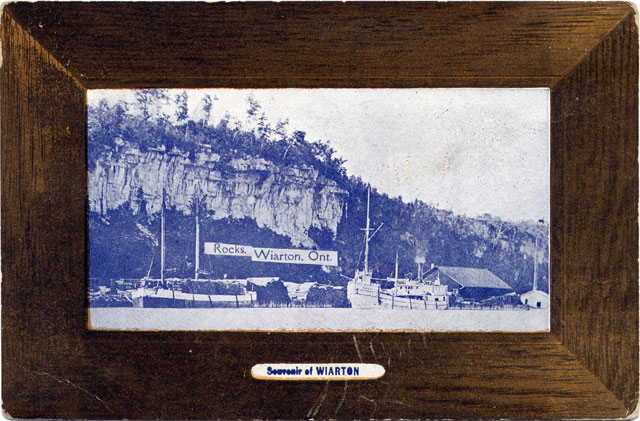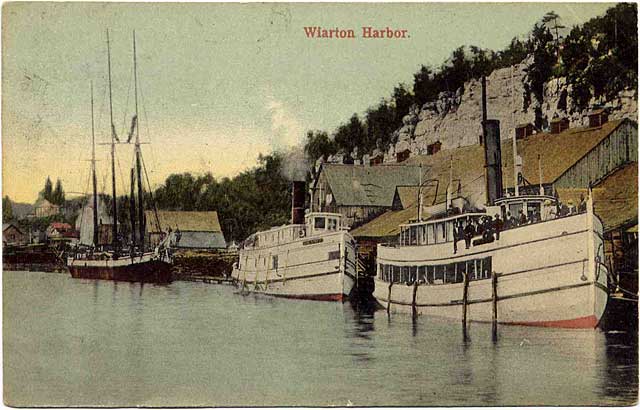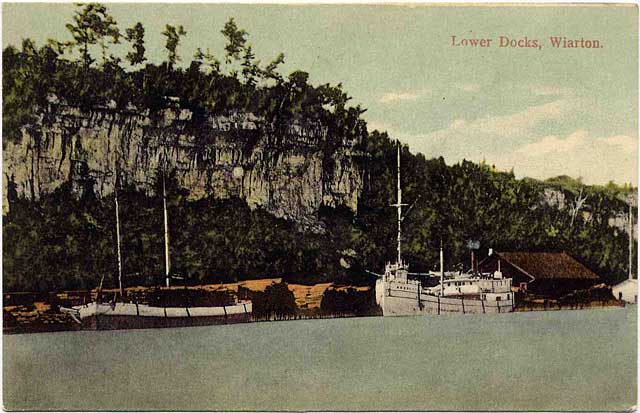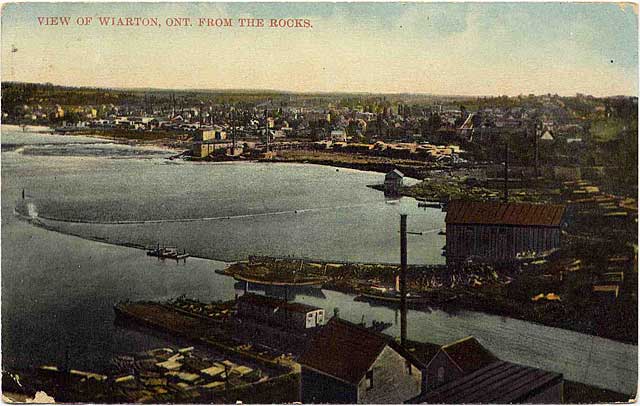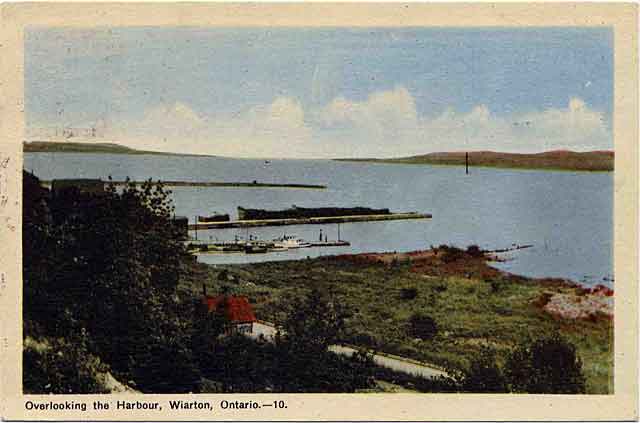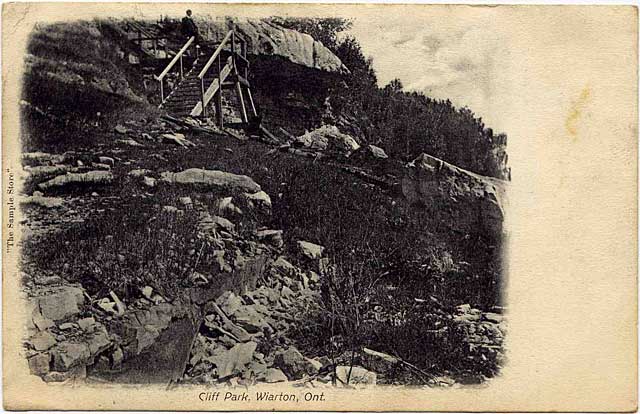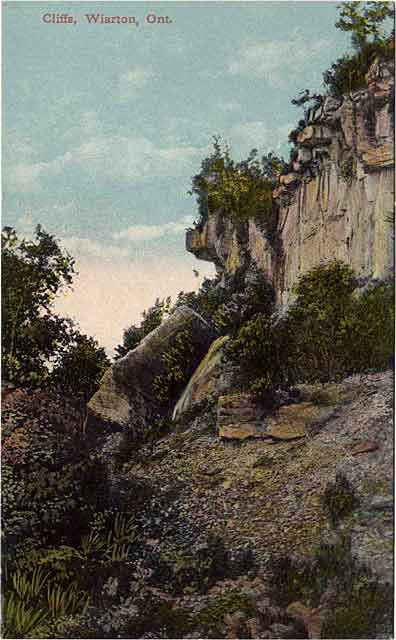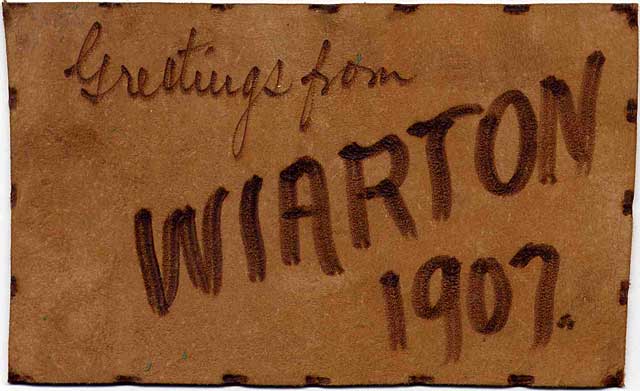In 1999, administratively, Wiarton was amalgamated into the new municipality of the Town of South Bruce Peninsula.
The town of Wiarton is known as the gateway to the Bruce Peninsula, the peninsula separating Lake Huron from Georgian Bay and, for many years, had a pair of stone gate posts with white painted wooden gates at the south end of town at the top of the hill.
Geographically, the town is defined by the rugged limestone cliffs of the Niagara Escarpment, (a UNESCO World Biosphere Reserve - one of only twelve such reserves in Canada), which bisects the town. The town rests on the picturesque shores of Colpoys Bay, part of Georgian Bay, itself part of Lake Huron, one of the Great Lakes whose border is shared between Canada and the U.S.A.
Wiarton's most important businesses were founded on the lumber industry. The harvest of timber and the manufacture of goods from lumber were an important industry early in the town's development, until unsustainable timbering practices wiped out the local forests. The next most important industry was fishing. In 1906, Wiarton was awarded a federal fish hatchery, which helped maintain the fish stock in the area for many years. Fishing was at its peak in the early 20th century, but suffered from the introduction of the lamprey eel to the upper Great Lakes through the Welland Canal in 1921. By 1932, the lamprey eel had arrived in Georgian Bay, and, together with the depression, it brought the decline of the fishing industry.
In 1881, the first train arrived in the town as part of Grand Trunk Railway system, for which Wiarton served as its northern terminus, extending to a new wharf in Colpoys Bay constructed in 1882. Last passenger train ran in 1957, when, due to the prevailing use of the automobile, the demand for train service declined. Freight trains continued using the tracks until 1968, when the lines were abandoned.
James E. Kraemer has an article on the Socio-Postal History of the Municipality of the Town of South Bruce Peninsula, with extensive notes on Wiarton, in Vol. 8, No. 4 of The Georgian Courier, a newsletter of The Grey, Bruce, Dufferin and Simcoe Postal History Study Group from August 2006. The study group is part of the Postal History Society of Canada. A visit to the Postcards of the Bay web site is also a great source of local history.
Wiarton Main Street
Looking South
Arlington Hotel Wiarton Ont.
The Arlington Hotel opened July 11, 1888. From the Postcards from the Bay website, “The Arlington was Wiarton's final grand hotel and as such, it was the largest, most modern and was classed among the finest in all of Canada. One could view sample rooms on the ground floor, along with the office, bar and dining room. Parlours were located on the second floor as well as single room accommodations and larger suites that included an attached bedroom.”
Below, the reverse of the card postally used Jun 8, [year indistinct]
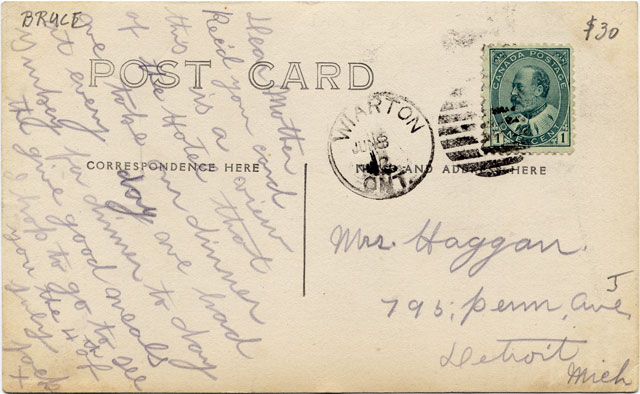
In Oxenden, the Glorious 12th parade featured music with a band playing “Protestant Boys” and “Croppies Lie Down”, and the whole village would follow a man dressed as King Billie astride a big grey horse decorated with pompoms and paper flowers. After the parade, villagers would bring out their homemade whisky and the day would often end in brawls amongst the young men from the south brought in by the timber trade whose presence created an atmosphere of transience and lawlessness. A band of thieves known as the “Keppel Robbers” ranged the whole peninsula until brought to justice in Wiarton.
Below, the AZO back which dates from 1908 to 1911
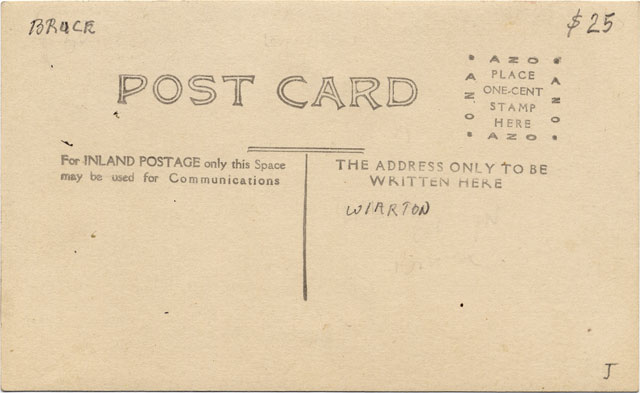
At the Wiarton Wharfs
The Thomas R. Scott was a 149’ long oak-hulled propellor driven 300 hp steam barge, built in 1887 in Grand Haven, MI by Duncan Robertson, for Thomas R. Scott. It was rebuilt at Marine City, MI, in the winter, 1897-1898, and sold to The Peninsula Tug and Towing Company of Wiarton on February 28, 1907. The ship foundered about four miles off Cabot Head, Georgian Bay, in sixty fathoms of water, on September 2, 1914, while carrying lumber from Cockburn Island, off the west tip of Manitoulin Island, to Owen Sound. The long lost wreck was discovered by Canadian Coast Guard divers in 1994. Adjacent to the Scott is the Crawford, an 86’ long steam-powered wood-hulled tug built in Wiarton in 1905. The ship was renamed the Thomas A. Tees in 1923 and taken out of service in 1940.
Below the reverse of the postcard, mailed from Oxenden July 24, 1912 to Hamilton. The writer will be moving to take a job in St. Catharines at 40¢/hr. “rain or shine”. The AZO back stampbox suggests the card was initially printed in 1905 to 1909. Given the ship was registered in Wiarton from 1907, the card was likely printed shortly after that.
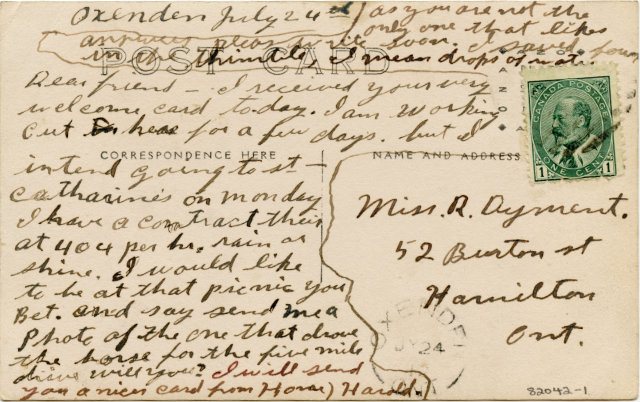
In Wiarton Harbour
Showing both steamships described on the card above. Note the load of logs on the Thomas R. Scott.
Below, the reverse of the card with an AZO stamp box commonly used 1910 to 1930.
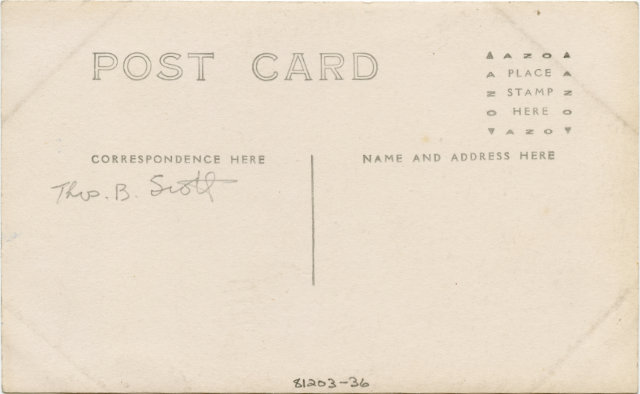
Old Bruce Shanty
Oxenden
This was the home of Robert Bruce in his later life. He died January 24, 1908, at 84 years old. While the photo was taken prior to that date, in at least 1907, the AZO stamp box on the reverse of the card, below, is normally associated with cards during the 1910 to 1930 period.
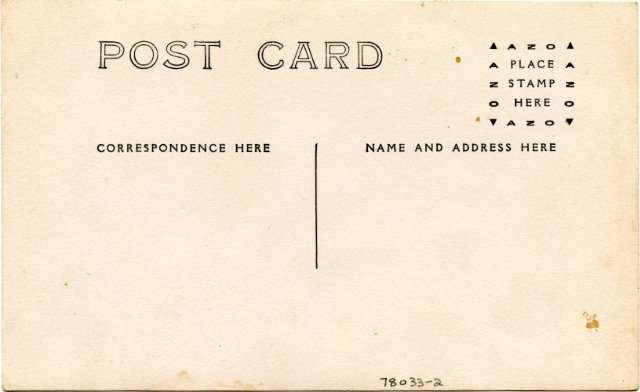
Bruce of Bruce’s Cave
From Grey Sauble Conservation’s web page on the Bruce’s Cave Conservation Area, just east of Oxenden, “Bruce’s Caves was named after a remittance man by the name of Robert Bruce that emigrated from Orkney Islands, Scotland during the outbreak of the Crimean War [note to reader—1853]. He was a very quiet man that never married.
When he first arrived in Canada, Robert settled in Keppel Township in the woods near the present town of Wiarton. In the early years he worked at railway construction in the summer, always returning to live in what in known as Bruce’s Caves. During the winter months, he would pay board to stay at the local jail. In the later years, Robert built a home and lived in it during the winter instead of living at the jail. Possessing about 300 acres of land, he had several thousand dollars in an Owen Sound bank.
Robert died January 24, 1908 at the age of 84 years old. In Robert’s shanty, they found a trunk with a fine blue broadcloth suit made by a Glasgow tailor, over fifty years ago. Robert was buried in this suit at the Oxenden Cemetery. The property was willed to a gentleman that was living on the farm at that time.”
View on Gleason River, Oxenden, Ont.
Below, the reverse of the card mailed July 8, 1914, to St. Mary’s, Ontario.
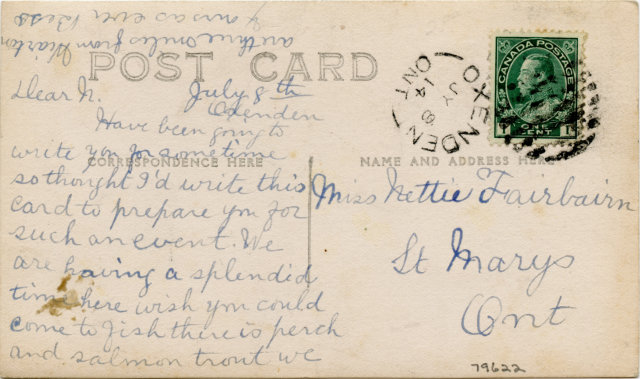
Berford Street, Wiarton, Ontario.—11
Below, a detail of the card showing Wiarton Dairy and the dairy delivery wagon
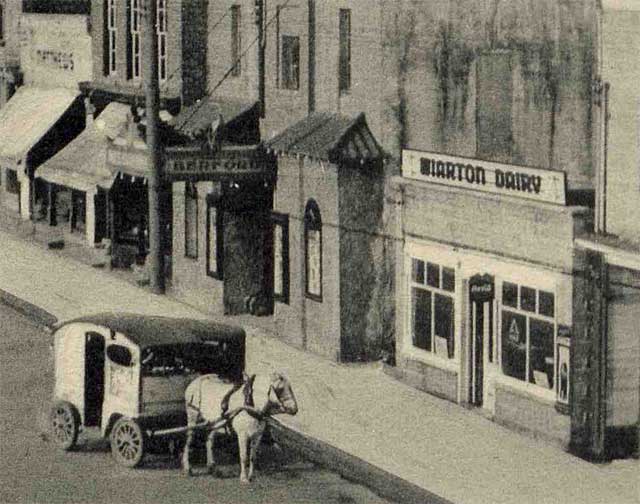
Dominion Fish Company’s Dock, Wiarton, Ont.
By 1900, The Dominion Fish Co. had its central packing plant in Wiarton where 120,000 pounds of fish were received each week, to be cleaned, frozen, packed and shipped.
